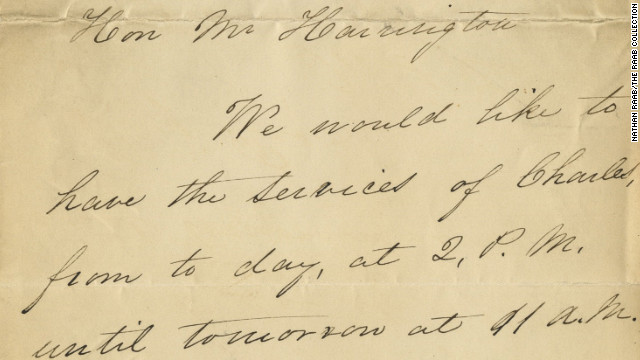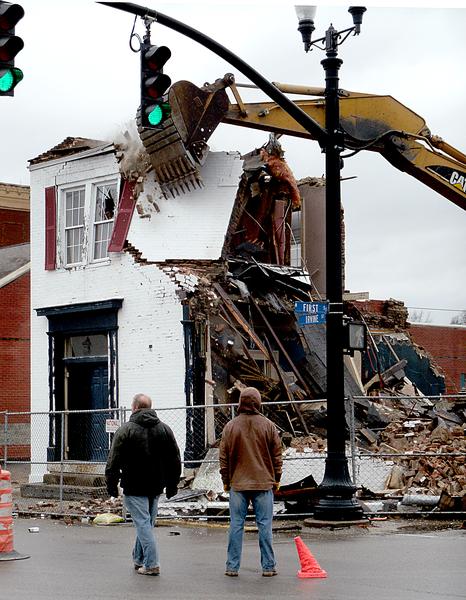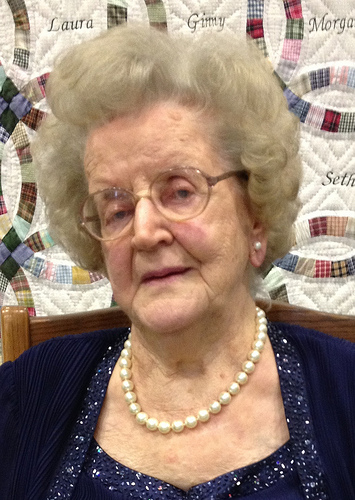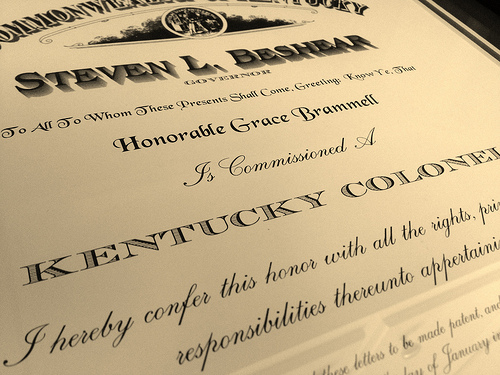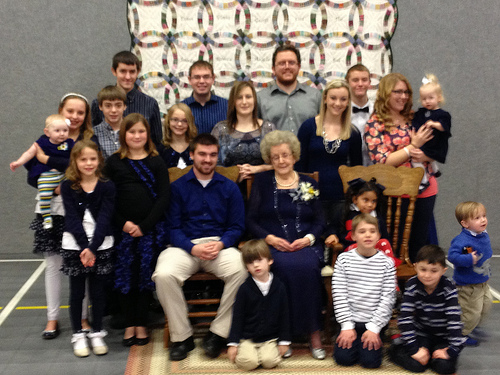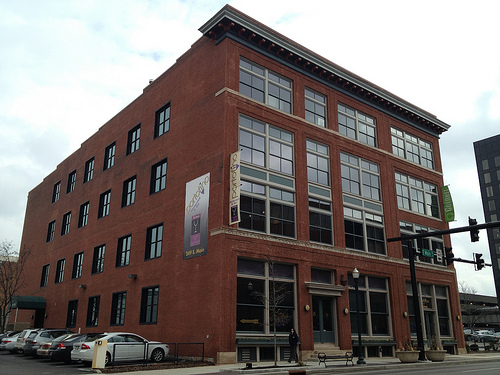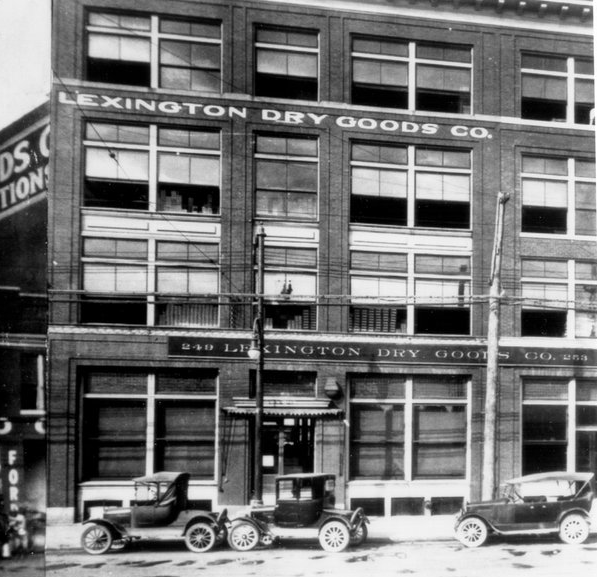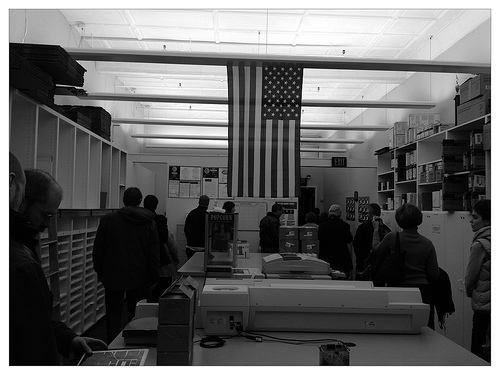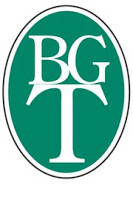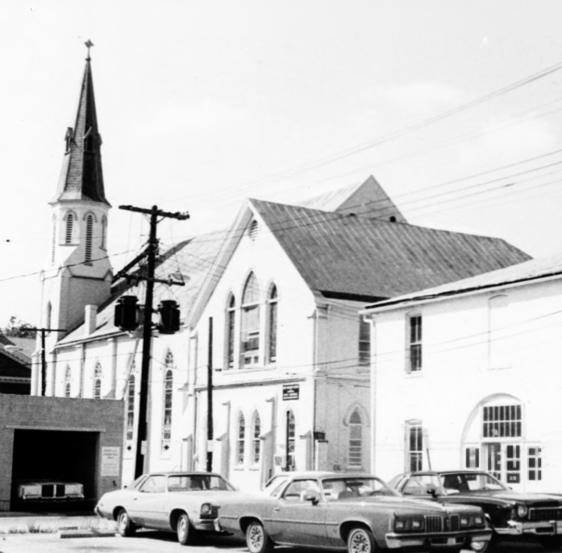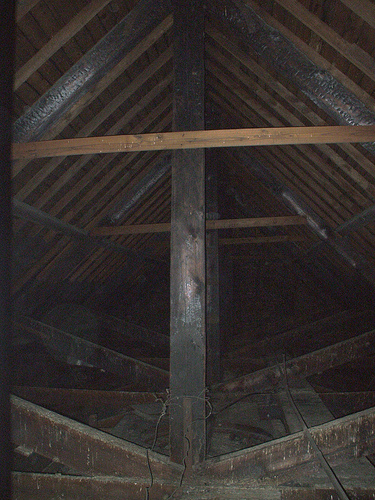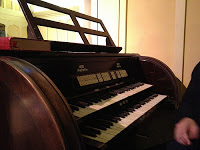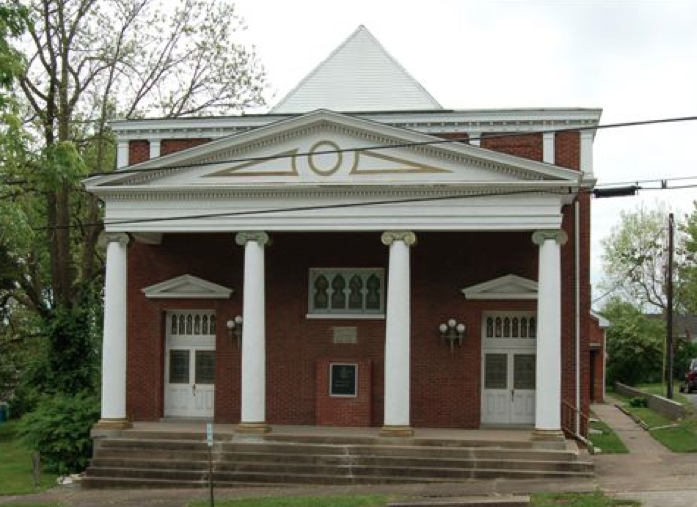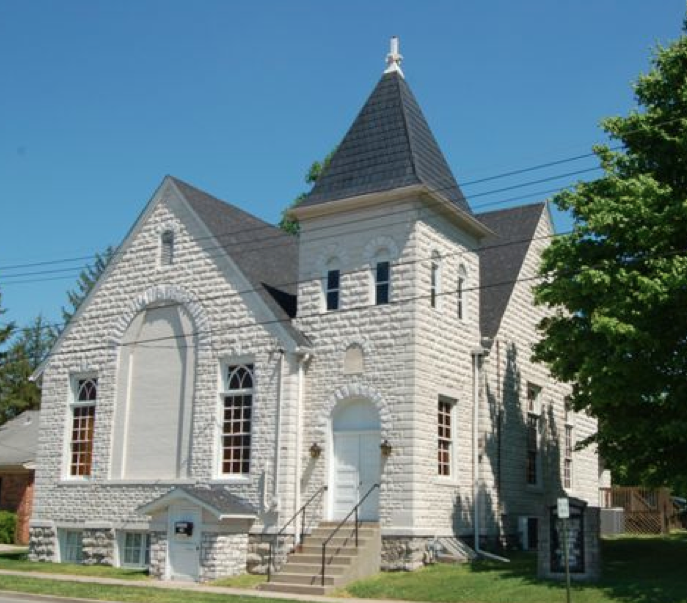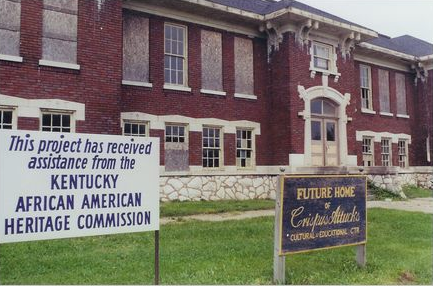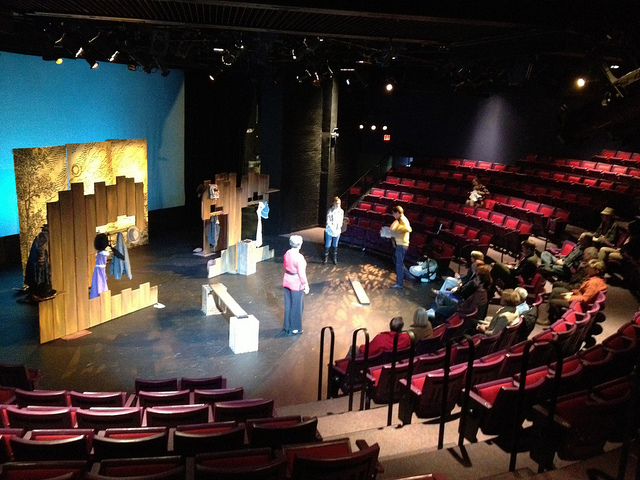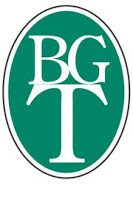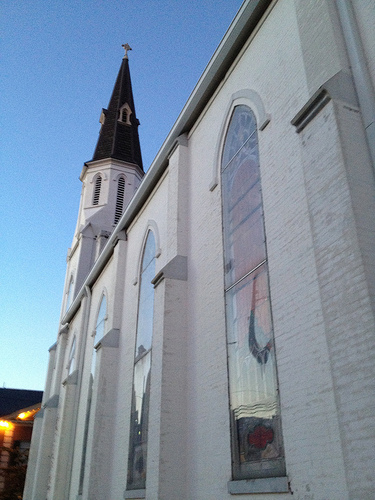 |
| former Centenary Methodist Church – Lexington, Ky. |
Local historic preservationists recognize the year 1955. It was in that year that the John Wesley Hunt residence was razed and the Blue Grass Trust was formed. Nearby, a local church congregation made another decision which ultimately led toward historic preservation. Today, a step toward preservation is once again needed at 154 North Broadway. It is an important step, as the old church – along with others in the immediate area – comprise what is described in the National Register as “an outstanding group of downtown ecclesiastical structures.”
Organized in 1866, the Centenary Methodist Episcopal Church dedicated its sanctuary at 154 North Broadway on July 24, 1870. Designed by Cincinnatus Shryock, the Venetian Gothic church cost to $32,000 to erect. Other descriptions of the style include High Victorian Gothic and Northern Gothic. Labels aside, the sanctuary’s exterior is bounded with sloped buttresses. The belfry actually shrinks as it reaches toward the heavens on account of the acute gables that impose great character for the octagonal bell tower.
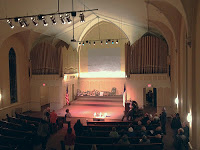 |
| Sanctuary |
As is often the case with churches, the historic newspaper archives at the public library prove quite informative. A March 1889 Sunday evening service was dismissed early “because of furnace smoking out audience.” The phraseology indicates that churchgoers to the church were accustomed to some smokiness, but that this Sunday it was too much to bare. Today, any smoke beyond incense would be cause to bring in the fire department!
Of course, this smoke could have caused damage which required repairs for, in either event, the church underwent “elegent improvements on the interior” later in the month with “lovely frescoe work.”
Another renovation in 1908 saw the installation of thirteen large windows – “five on each side and three in front [each] of beautiful art design add[ing] both to the interior and exterior beauty of the building.” These windows were installed at a cost of $1,000.
In 1923, a fire caused $15,000 damage to the structure evidence of which is visible from the belfry. Of course, the visible damage could also have been caused by other more recent fires. The author recalls firefighters responding to a fire above the chapel in recent years.
Oh, yes. 1955. In February 1955, “the fate of Lexington’s 90-year-old Centenary Methodist Church … will be decided within the next two months. … The church expects to either relocate, remodel its present building, or consolidate.” We know not what a remodel plan would have looked like, but it would be likely to have caused serious disruption to the Venetian Gothic structure standing at the northeast corner of Broadway and Church streets.
The congregation decided to consolidate with another church, Trinity Methodist Church with the consolidated church assuming the Centenary name but using the Trinity facilities on South Limestone (since demolished, Centenary relocated again in 1992 to Tates Creek Road). The merger was completed in May 1955 and the old Centenary Church was sold in October 1957 for $29,025.
The following year, another church – Everybody’s Church – purchased the old Centenary Methodist for $30,000. Everybody’s Church had previously worshipped at the downtown Ben Ali Theater since being founded in 1927 by the former minister of Maxwell Street Presbyterian, Rev. J. Archer Gray in an attempt to “reach ‘the man of the street.'” By 1998, Everybody’s Church had fallen on hard times and shuttered with the historic structure being purchased by Broadway Christian Church in 2003 for $25,000.
Today, the historic Centenary Methodist Church is again for sale. The listing and our recent deTour with the Blue Grass Trust revealed “incredibly preserved geometric style stained glass, flat level hardwood floors, [and] very high ceilings.” It is listed for $680,000 and the listing includes certain preservation-minded easements.
During the deTour (December 2012), the pipes of the organ were exercised once again filling this once-holy space. The space above the sanctuary reveals some charred timber evidencing the fires described above. But the space also reveals the building’s strength with some beams being appx. 18″ thick. And it A spacious, open chapel on the second floor behind the main church is ripe with potential.
Explore additional pictures of this beautiful Shryock-designed church by clicking here.
Sources: Downtown Building Inventory; Fayette PVA, Jim McKeighen, local.lexpublib.org, NRHP (Northside N.A.)
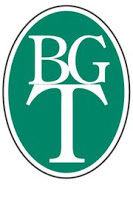
The Blue Grass Trust for Historic Preservation hosts a monthly deTour for young professionals (and the young-at-heart). The group meets on the first Wednesday of each month. Our February gathering will be at the Oldham House on South Limestone Street with an afterHour at Joe Bologna’s. Join us there at 6:30 p.m.; learn more details on Facebook! You can see Kaintuckeean write-ups on previous deTours by clicking here.
